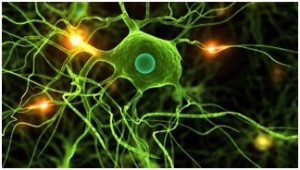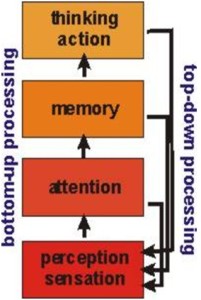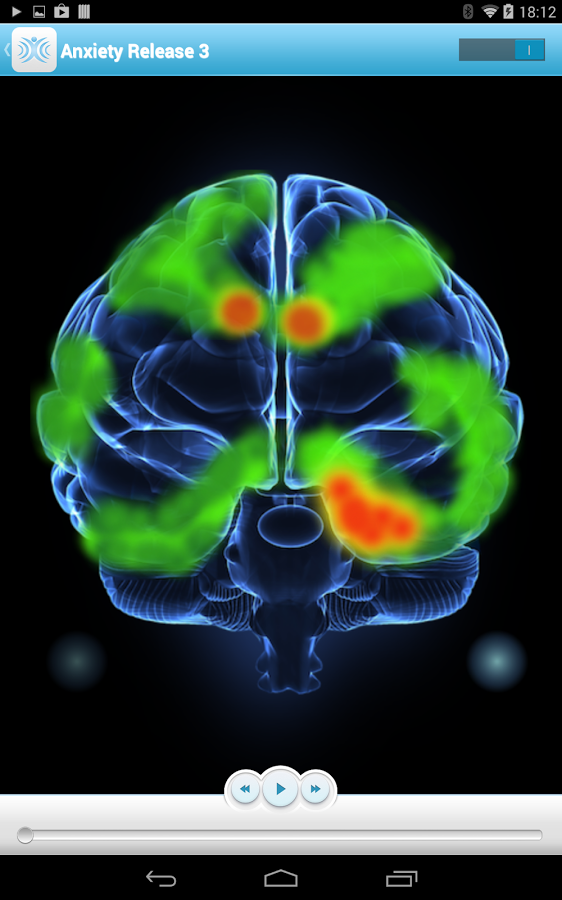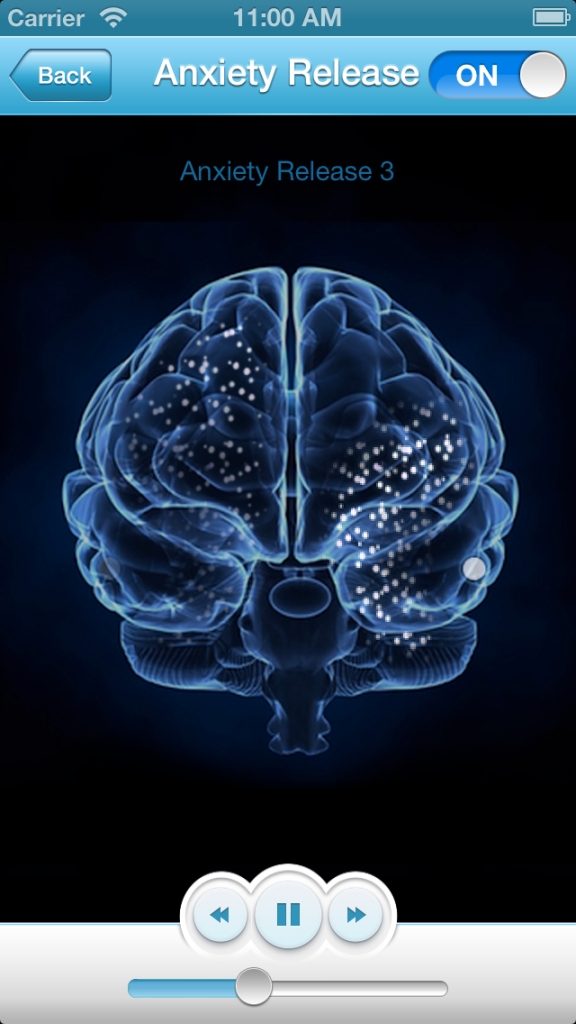What does it all mean?
Most people misunderstand the meaning of “chemical imbalances” in the brain. This phrase has become the buzzword to use today to explain mental health problems, including social anxiety.
Understanding completely how this works is important to progress and recovery, so this is discussed thoroughly on the audio series relative to recovery from social anxiety disorder.
What follows is a simplified version of these mechanisms, because brain processes and mechanisms are not fully understood and the explanations that we do have would fill several large textbooks.
We can say that no one is “born” with social anxiety. You may remember circumstances and events from very early in life, but there is no “gene” that codes for social anxiety, and there is not an immutable set of genes that cause social anxiety to occur.
At best, we can say that some people have a predisposition toward anxiety in general. From what we know, this is not a predisposition to social anxiety per se, it is a predisposition to be anxious in general.
Why you develop social anxiety has more to do with environment than it has to do with genetics. However, there are always interactive combinations occurring.
People do not generally understand that even if something is genetically influenced, this does not mean it is genetically caused. Social anxiety can not occur unless events, situations, and circumstances in the persons’ environment “push” or “lead” the person to develop it.
Because we develop social anxiety over time (although some people feel it hits them all at once), the brain is learning all the time — this is cognitive structuring — how to be socially anxious. The brain is learning how and what to be afraid of.
The brain creates billions of neural pathways
The brain is literally creating new neural pathways and associations that feed and fuel our fears and anxieties in social situations.
This is quite normal because everything we learn becomes part of our neural associations or pathways.
You learn by doing things over and over again
When you learn things about your family, it becomes a part of your brain’s neural pathways and associations. Remembering your mother brings back many memories because they are all tied together or bundled together by these neural pathways or associations in the brain.
Anything you learn, regardless of what it is, becomes a part of the vast neuronal associations in the brain, which contain over one billion nerve cells.
When you learn that Alexander the Great tried to conquer the world, as did Napoleon, your brain ties these people together into a neural association in your brain concerning history, historical events, and leaders who lived in the past.
When you learn to tie your shoes, ride a bicycle, drive a car, use a computer keyboard, or learn a musical instrument, your brain gradually develops the neural pathways to make your “practicing” become automatic.
The more you practice, and the more quality time you put into your practice, the more that your brain pathways change. Fairly soon, you know how to tie your shoes and you don’t think about it anymore. This practice you did has made tying your shoes become automatic.
Learning a musical instrument works the same way. At first, it is difficult and hard, but the more you practice, the better you get. As you take one step at a time, and practice thirty minutes a day on your instrument, you continue to improve and get better.
What is happening? Your brain is arranging a new neural pathway or association for learning to play that instrument. As your brain develops this new pathway (it grows the more you practice and learn), you get better and better at playing your instrument.
It is exactly the same way with cognitive (learning) therapy for social anxiety.
As you learn, and then practice, the cognitive methods, strategies, and concepts, a new neural pathway begins to form. The more you practice, the more this new neural pathway or association grows.
Practicing on a behavior allows it to become automatic over time
Progress is slow at first, just like it is when you learn any new skill, but if you continue to practice, you continue to get better. If you practice enough, the habit becomes more and more automatic over time.
What you learn changes the neural associations in your brain. What is in those neural pathways or associations becomes permanent.
Now, how do brain chemicals, neurochemistry, and “imbalances” of brain chemistry fit here?
Your neural pathways and associations influence and decide which neurochemicals, and at what “strength” pass through the synapse (i.e., synaptic gap). Your neurochemistry is determined by your neural pathways and associations, not the other way around.
Medication or pills can change your brain chemistry temporarily. But, medications have no power to change neural pathways or associations. There is no cure for social anxiety in medication. There is a temporary, chemical change in your brain brought about by the medication. But it lasts only as long as the medication is synthesized to last, from four hours to longer periods. But it is never permanent. You always need to take another pill.
A permanent solution involves changing the brain
The only permanent solution is to change your neural pathways and associations. This can only be done by having new experiences, and building new coping strategies, and perceptions upon them. Once you have had a significant new experience, the learning can happen quite quickly. Think of an experience you had that changed your world view suddenly – in a positive way. You succeeded at something you weren’t expecting to, or someone you look up to unexpectedly told you they admired you.
When our neural pathways and associations change, our brain chemistry also changes. This is a permanent change, because you have practiced the new methods and concepts (i.e., the cognitive therapy) into your brain repetitiously, thus creating new neural associations. The more dense these neural associations are, the more you have recovered from social anxiety.
Everything in life works like this. Whatever you really learn causes new neural pathways in the brain, and, over time, you gradually become better and better at something.
Cognitive therapy teaches us rational beliefs
Cognitive therapy involves learning to challenge maladaptive thoughts and beliefs that can maintain and exacerbate anxiety.
This may involve learning how to recognize faulty thoughts and writing them down in a list, and then thinking of a more adaptive thought and writing that in a separate column. This is certainly an insightful process which will enable you to see the world in a much more rational way. It may even help you feel less anxious in the short term.
However, for many people cognitive therapy is a long hard slog. This is because it is a top-down therapy while the brain is a bottom-up system. What does this mean?
It means that most learning comes from experience. How did you learn how to ride a bike? How did you learn about love? This is bottom-up processing – as a result of sensations entering your brain you form new learnings – ‘I can trust my body,’ ‘I am loveable’ etc. These kinds of experiences have a much stronger effect on how you feel and see the world than your thoughts. Yes you can control your feelings with your thoughts, but not for long and rarely in a permanent way.
This is why many people get frustrated with cognitive therapy – it seems to make a lot of sense initially, and it often seems to be working initially, but as soon as you stop doing the relaxation exercises, or the thinking exercises, the anxiety comes flooding back. No matter what they do the anxiety is still there.
EMDR enables you to learn more adaptive emotional responses
Eye Movement Desensitization and Reprocessing (EMDR),is a PTSD therapy, which involves focusing on alternating visual and/or auditory stimuli. When paired with focused attention, bilateral stimulation produces decreased physical and mental tension – sometimes within minutes, and often without having seemed to have done anything. There is no effortful concentration, no effortful challenging of negative thoughts. As an added bonus, this experience of feeling better following bilateral stimulation often leads to long-term changes in the individual’s perception of their ability to control their anxiety. The reasons for EMDR’s efficacy is that it is a bottom-up approach, it uses a sensory experience as the basis for change.
“In order to produce lasting effects, psychotherapy should aim to restructure neural networks, particularly in the subcortical-limbic system which is responsible for unconscious emotional responses. ‘Insight’ or ‘appeal’ reach only corticohippocampal structures, which correspond to conscious memory and cognition, but have only very
limited effects on the motivational system”-Thomas Fuchs, Professor Phenomenology, Univ Heidelberg (2004)
With over 30 randomized clinical trials attesting to the efficacy of this method, there is ample research backing for this process. Experts are impressed: “EMDR is the most revolutionary, important method to emerge in psychotherapy in decades”claimed Herbert Fensterheim Phd of Cornell University.”The speed at which change occurs during EMDR contradicts the traditional notion of time as essential for psychological healing.” StatesBessel A. van der Kolk, MD. Professor of Psychiatry, Boston University School of Medicine.
Perhaps Albert Einstein said it best when he said, ‘All learning comes from experience, everything else is just information.’
Having said that EMDR is not for everyone – some people find the method’s seemingly direct line to the unconscious too confronting. Some people prefer the safe and steady, more rational approach of CBT. Others don’t want to deal with mental phenomena at all and are happy to rely on some form of effective medication.
This article is adapted From Social Anxiety Institute.
To download The Apple/iTunes version of Anxiety Release App click here.
To download the Android version of Anxiety Release based on EMDR click here.



